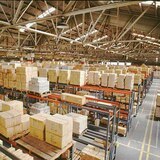Optimize your Processes with Value Stream Mapping | Continuous Improvement
Introduction to Value Stream Map
Value Stream Mapping is a technique used to visualize and understand the flow of materials and information throughout a process, from the receipt of raw materials to delivery to the end customer. Its objective is to identify and eliminate waste to optimize production processes.
The first thing to know is the definition of the value chain, since Value Stream Mapping tries to draw with paper and pencil this chain. This chain is the set of actions required (those that provide value and those that do not) to move the product through the main flows:
- Production flow: it must go from the raw material to the hands of the end customer.
- Design flow: from product conception to product launch.
In this post, for ease of understanding we will only focus on our supposed door-to-door production center, i.e. from receiving to shipping, but as mentioned before, the value chain is much more.
The Key Benefits of Value Stream Mapping
The Basic Principles of Value Stream Mapping
What steps to take to create an effective Value Stream Map
How should we start?
Start the value chain map at the door-to-door level.
As we mentioned in the introduction, the value chain goes from receipt of raw materials to delivery of the product to the end customer. However, when we start with Value Stream Mapping it is best to start with the door-to-door production flow, i.e. from the time the components are received at the factory until the product is shipped out of the factory.
As experience is gained in this technique, it can be extended to suppliers and customers, i.e. the entire chain.
Material and information flows
The production flow consists of:
-
Material flow: it is basically the first thing that comes to mind, how the material moves in the factory.
-
Information flow: as important as the previous one, it tells each process what to do or produce, in what quantity, at what moment... The information should flow in such a way that one process does only what the next process needs at the time and in the quantity it requires.
In "Value Stream Mapping" both flows should be represented.
Selecting the product family for the Value Stream Map
Do not draw "Value Stream Maps" for all products, but focus on product families, particularly those in which customers have the greatest interest.
A product family is one that undergoes similar transformation processes and shares production equipment. Thus, after selecting a family, the products of which the family consists, the quantity demanded per customer for each product and how often it is requested should be written down.
Who should manage Value Stream Mapping?
The Value Stream Mapping technique should be managed by a person who has the responsibility to understand the value stream of a product family and improve it. This person should report directly to the factory manager in order to have enough support and strength to promote all the necessary actions for change.
Common Mistakes in Value Stream Mapping Implementation
How to integrate Value Stream Mapping into the Lean Manufacturing Strategy
Software used to facilitate the realization of Value Stream Mapping









